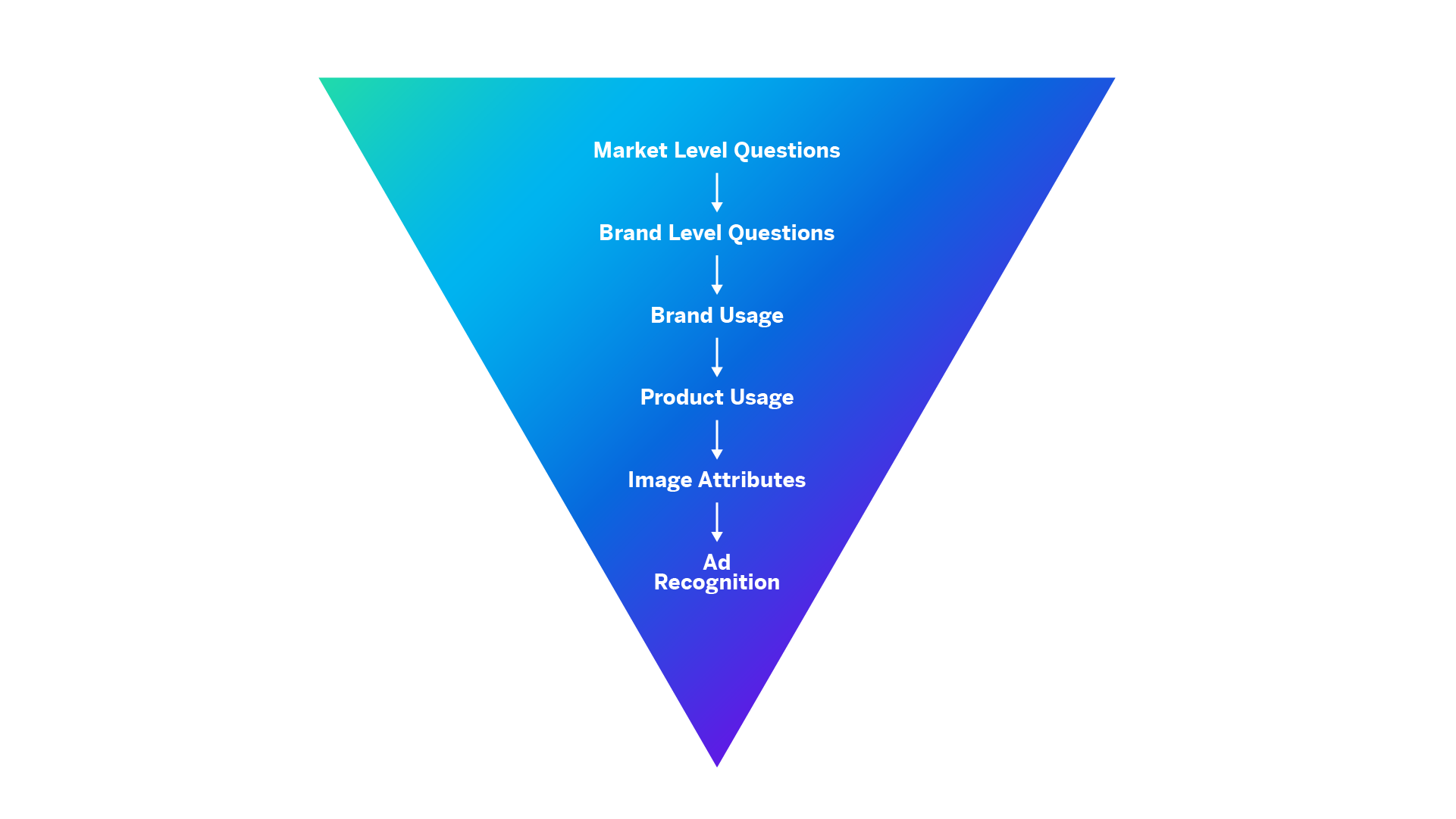The overall survey structure is important to guide your respondents in a logical progression through the survey. The order of your questions provides this structure.
There are two main approaches to designing the overall survey structure:
-
Broad to Narrow:
-
For example, in Brand Tracking, start with broader questions about the market you operate in, then move to questions about your brand, its products, usage, and perceptions.

-
For example, in an Employee Pulse, start with questions about the overall sentiment and engagement of employees, such as “overall how proud do you feel working for...?” Then as the survey progresses, move into more detail (e.g. questions about training, benefits, etc).
-
-
Narrow to Broad:
-
For example, in Customer Touchpoint research, start with a specific interaction (e.g. bank teller interaction), then move into a more broad set of questions about the business and brand overall.

-
Demographic questions can be placed at the start or end of the survey, however, whenever possible use O-data to import any existing demographic data you already have about respondents. When you must ask demographic questions, consider where to place them:
-
Start of the survey: Only place demographic questions that are critical to screening or qualifying your respondents at the start of the survey. For example, if you do not have Parental Status in your O-data, and only want parents to complete your survey, you should ask this question at the start.
-
End of the survey: Other demographic questions are best placed at the end of the survey. They are very personal and can result in survey dropouts if asked too soon in the survey.